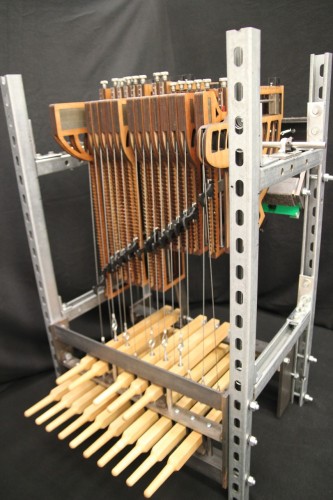
The interview began with a realization: even engineers struggle with modern technology. “Sorry for missing your call, the cell signal on campus is a little patchy,” Joey Brink explained.
Brink, who received an ABET accredited B.S. in Mechanical Engineering at Yale in 2011, is currently pursuing a doctorate in mechanical engineering at the University of Utah’s School of Engineering. He has recently settled into a laboratory focusing on the biomedical applications of robotics, and plans to spend his remaining time at Utah working there. But current work aside, it is the path that led him to where he is today that makes Brink’s story truly unique.
Brink’s interest in engineering began not at Yale, but in his room — as a typical five-year-old boy with a K’Nex construction set, he developed a passion for building structures from the ground up. “That was my first experience with engineering, design, and building stuff,” explained Brink.

Alongside construction, music served as Brink’s other passion through childhood. As an accomplished piano and percussion player, he came into Yale intending to major in music. Part way through sophomore year, he decided that while he cherished music as a hobby, he “wanted to build things not only as a hobby but as a career.” “I should have brought my K’Nex to college,” Brink laughed. Admittedly, choosing an intensive nineteen-credit major so late in the game was a challenge and Brink was always “playing a bit of catch up,” but taking five engineering classes each semester proved worthwhile.”
During his junior year, Brink met Mechanical Engineering Professor John Morrell, who would later leave Yale in 2012 to work for Apple, and joined his Human Machine Interface Laboratory. Professor Morrell was an amazing advisor who promoted hands on learning,” recalled Brink. Only one year later, Morrell would co-publish a paper with Brink for his senior project: a practice carillon for the University.
Like many prospective Yalies, Brink was immediately struck by the music emanating from Harkness Tower. During his time at Yale, he became a member of the Guild of Carillonneurs, and later a co-director of the program. Thus, it was no surprise that he dedicated his senior project to carilloning, combining his interests in music and engineering to construct a working practice carillon. “You know how some electric pianos are touch sensitive, and others are not?” he explained, “I wanted to make a touch sensitive [practice] carillon.” Practice carillons, unlike their actual counterparts, are not hooked up to bells weighing a few thousand pounds; furthermore, each real carillon has a different feel depending on the bells they are connected with. Using a complex system of weights and fulcrums, Brink ultimately succeeded in creating a practice carillon that could be adjusted to feel like any real carillon. He presented his work at a conference in Vancouver, which was his first real exposure to the professional research environment. “It was a great experience to participate in the full process, design to presentation,” said Brink.

After spending a year in Belgium studying carillon, Brink enrolled in the University of Utah’s Engineering School to join its emerging robotics program. While only in his first year, Brink already has gained much exposure to graduate level research. What he loved most about his engineering career at Yale continues to inspire Brink at Utah — “working together in teams to solve problems … learning and struggling to learn together, learning from each other.” In the long run, Brink plans to continue developing professionally as both a mechanical engineering and a carillonneur, all the while enjoying the natural scenery in Utah. “I hope to pursue a research career path, whether that be at a university, government research center, or a private company,” said Brink. When asked if he still finds time for music as a busy graduate student in an emerging engineering department, he paused for a moment and then stated, “Well, there is a carillon within a 30 minute radius.”
